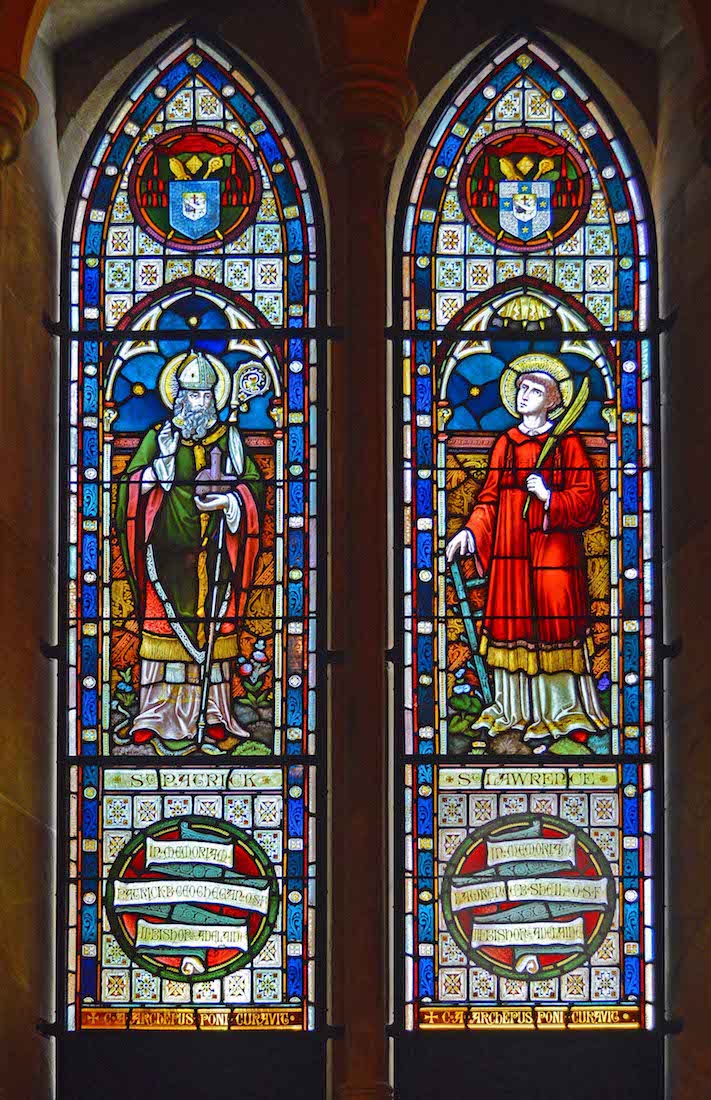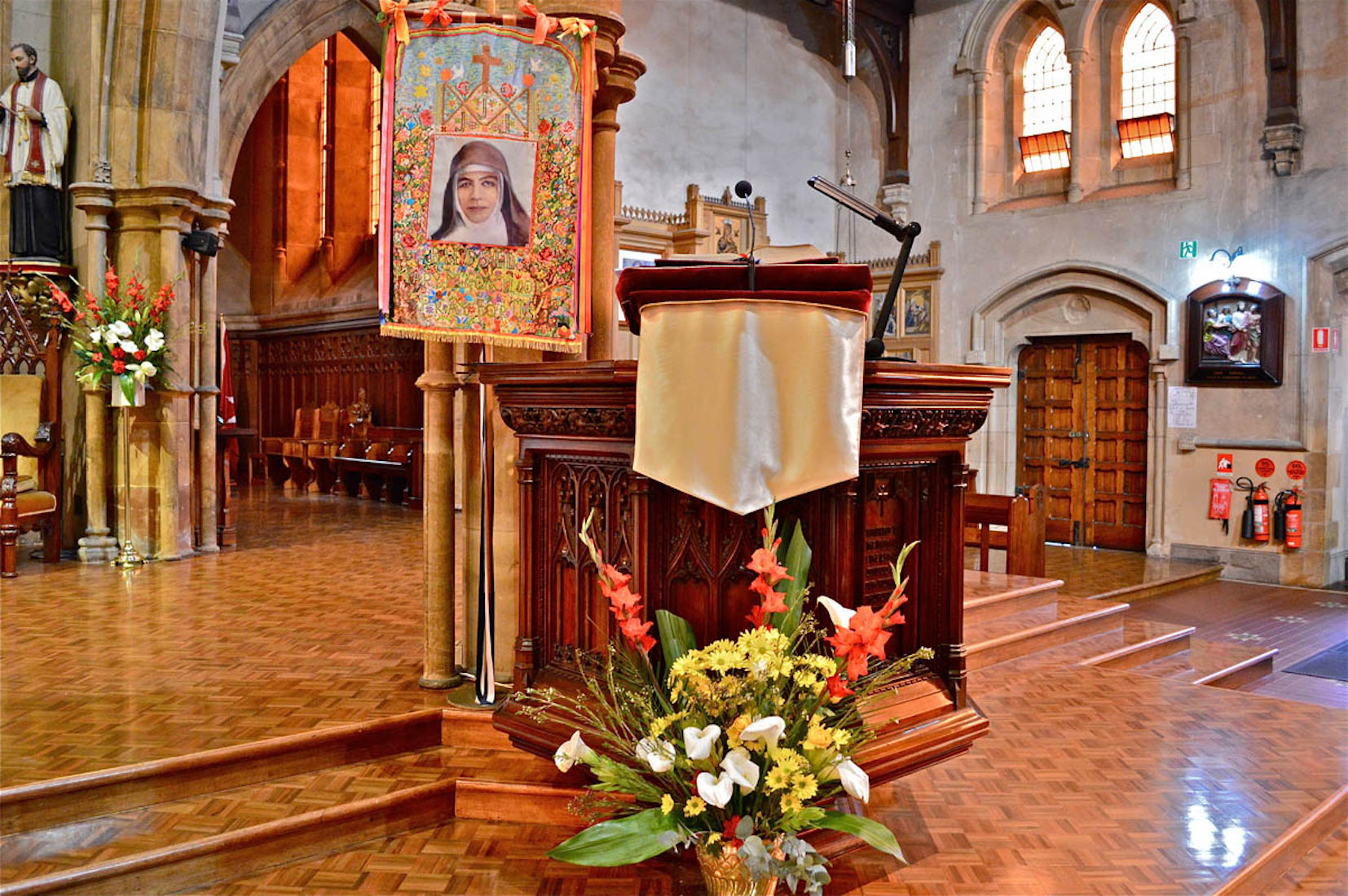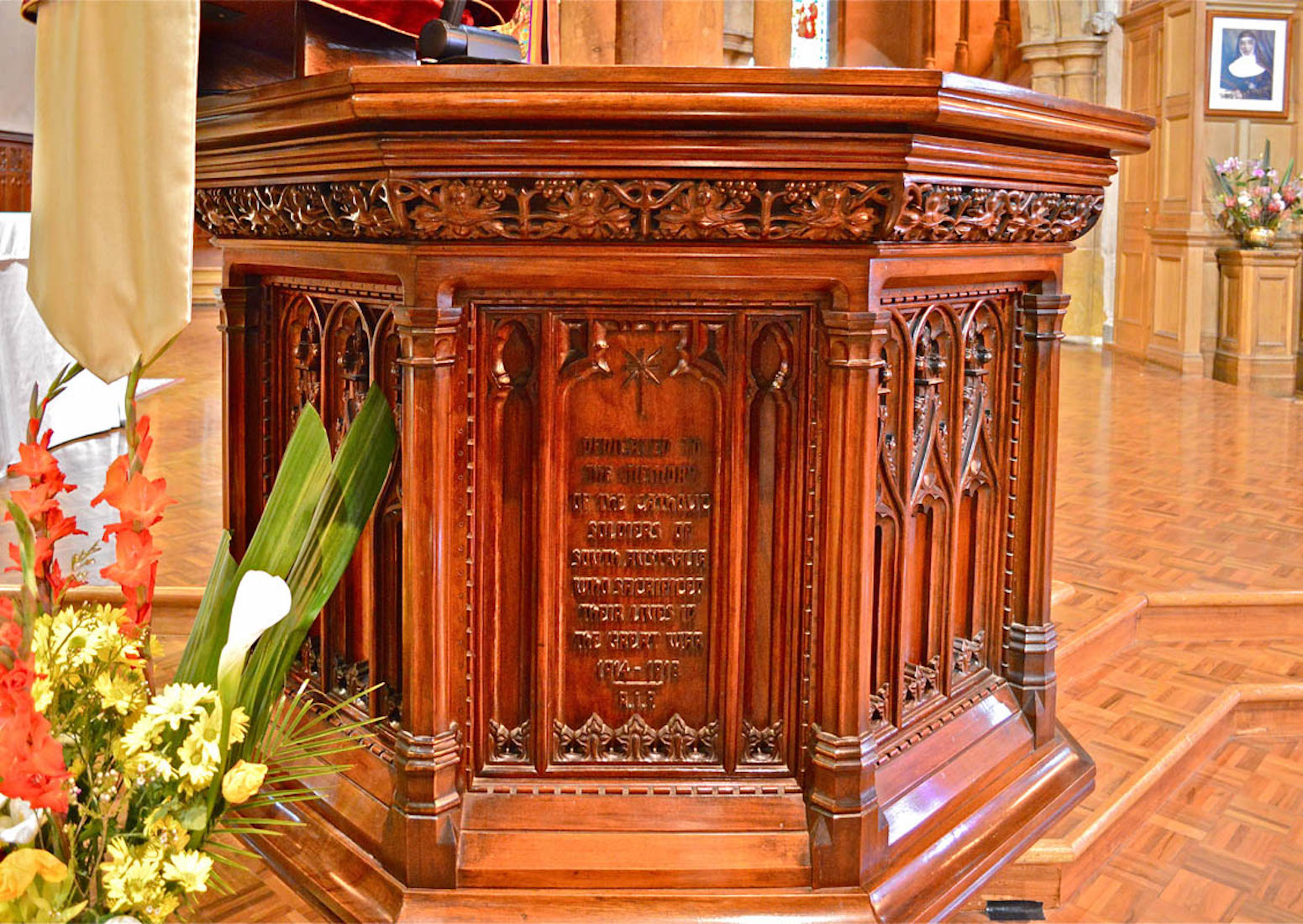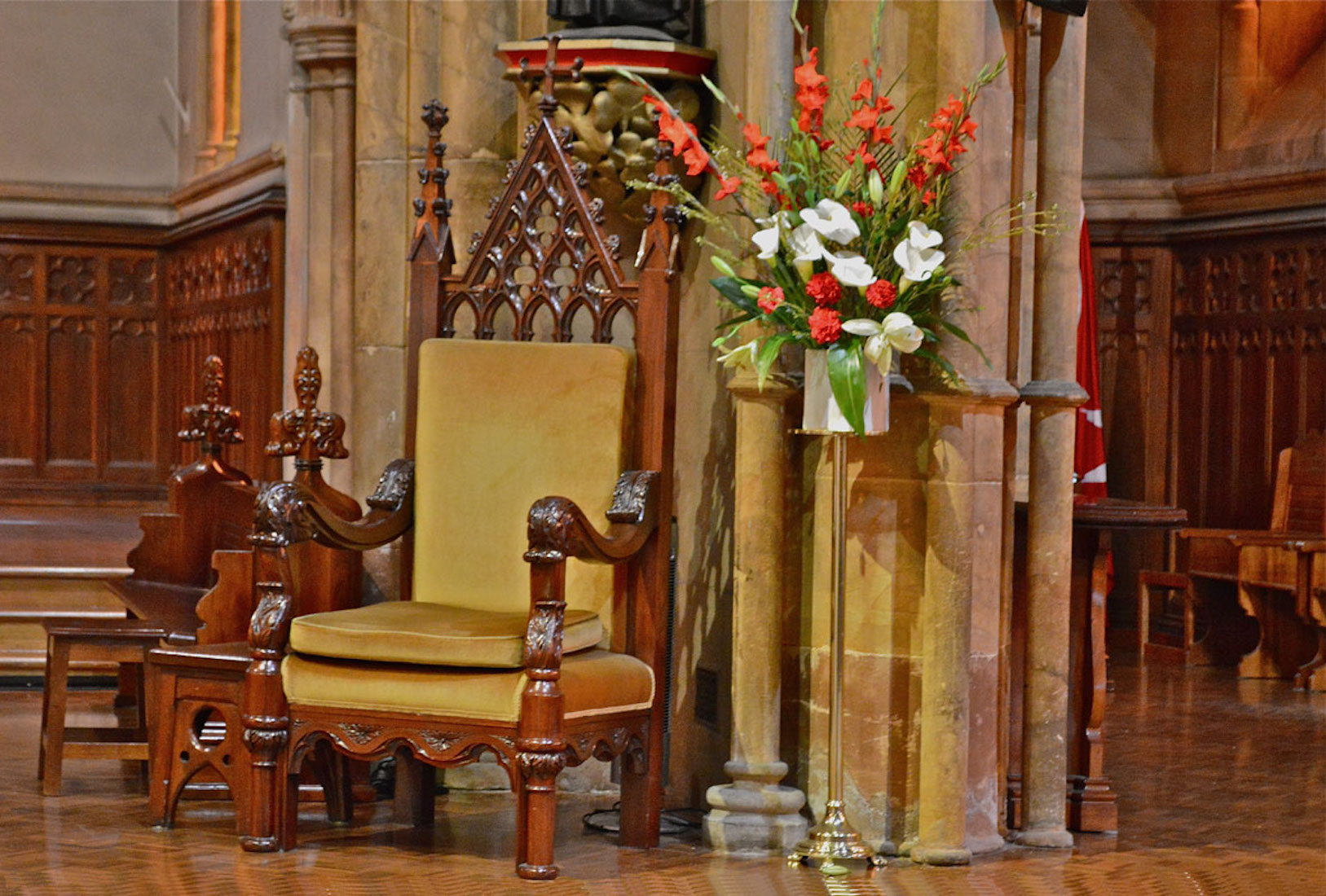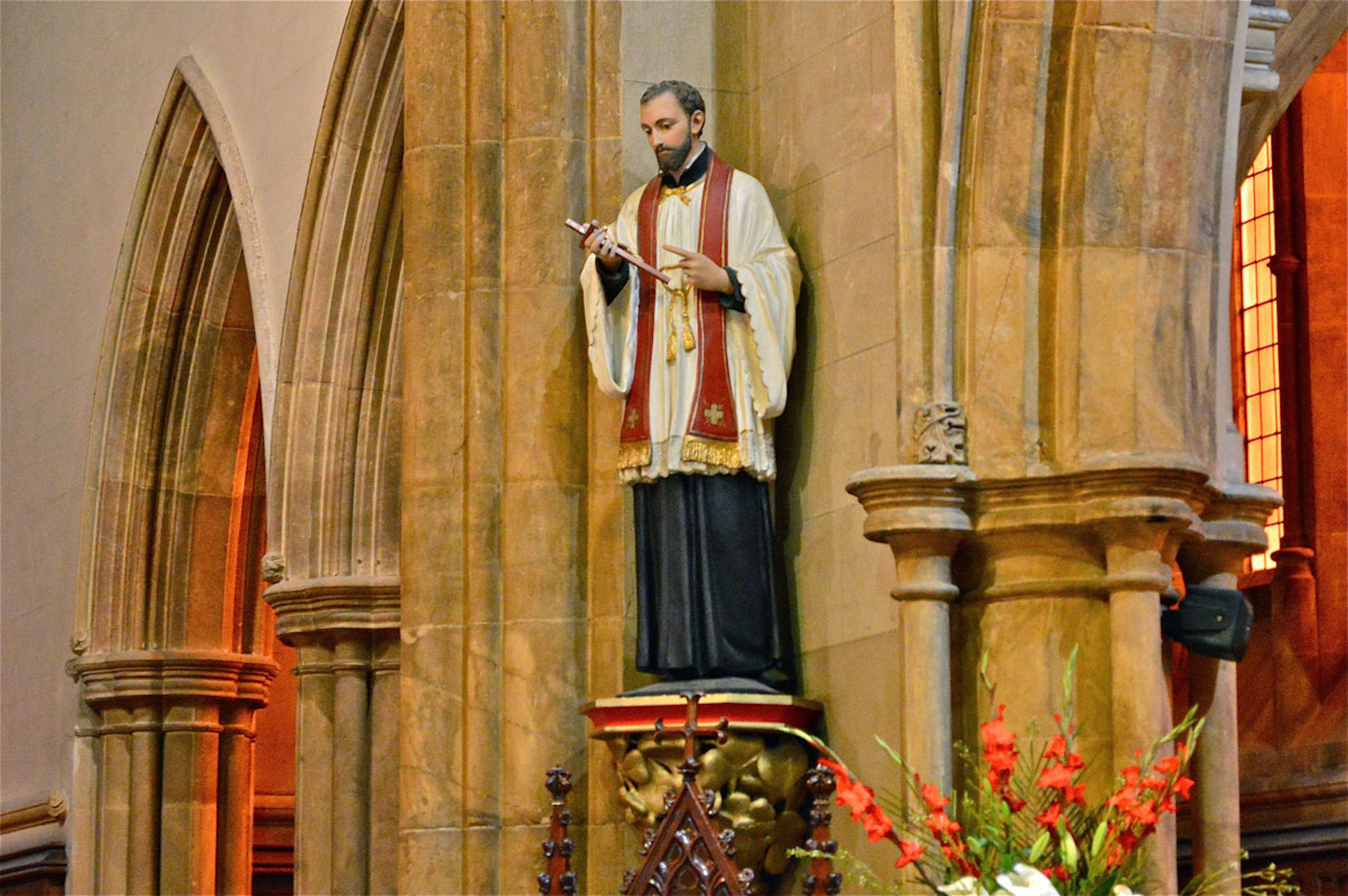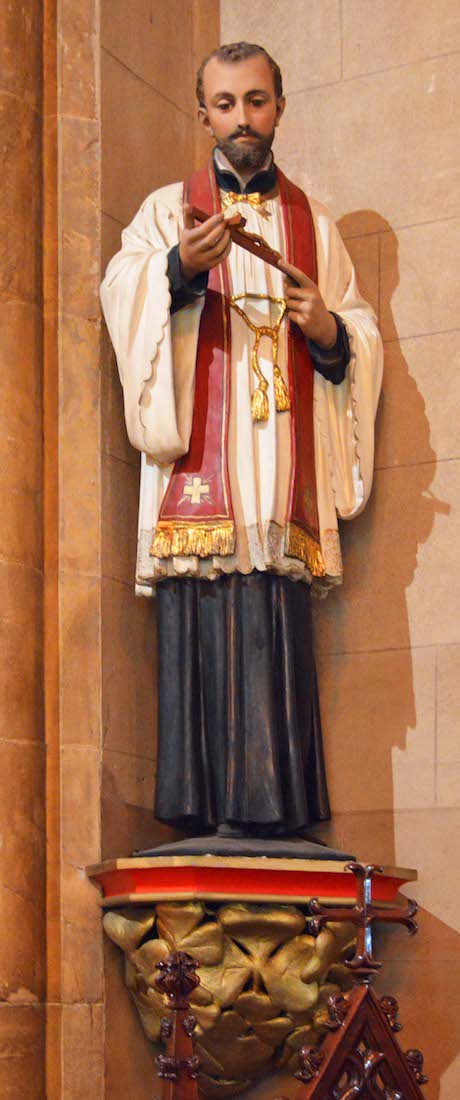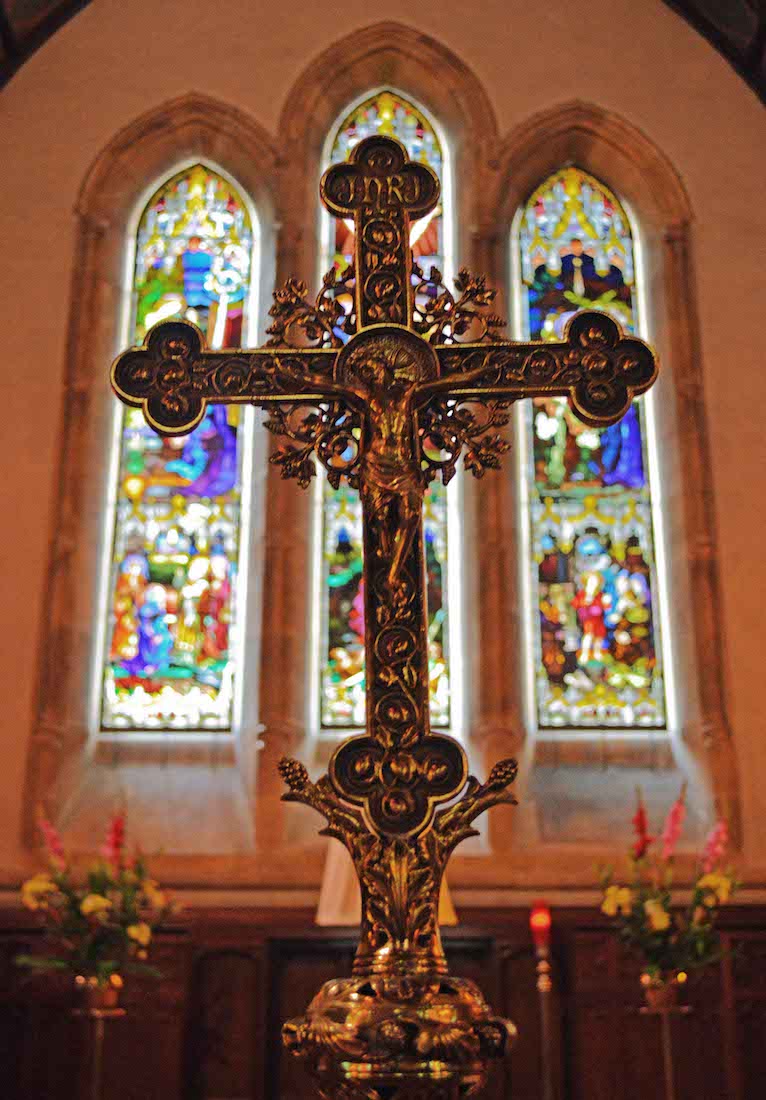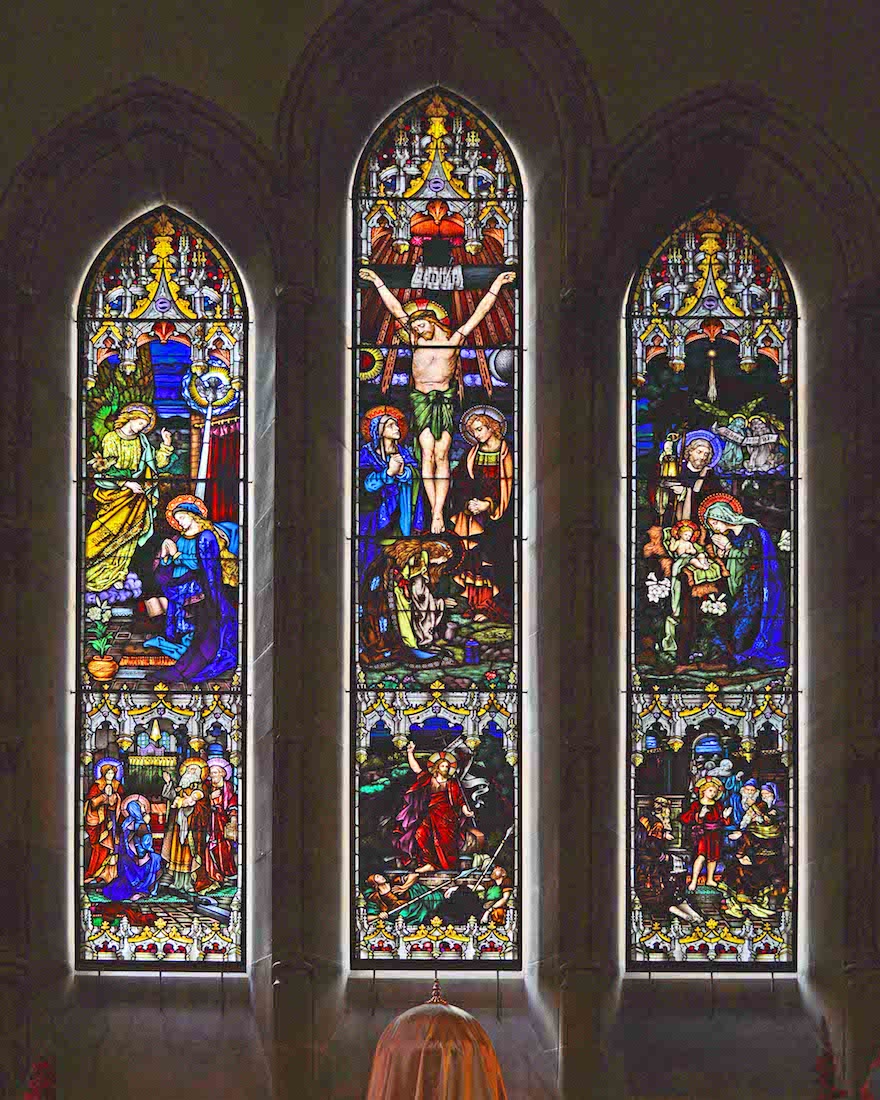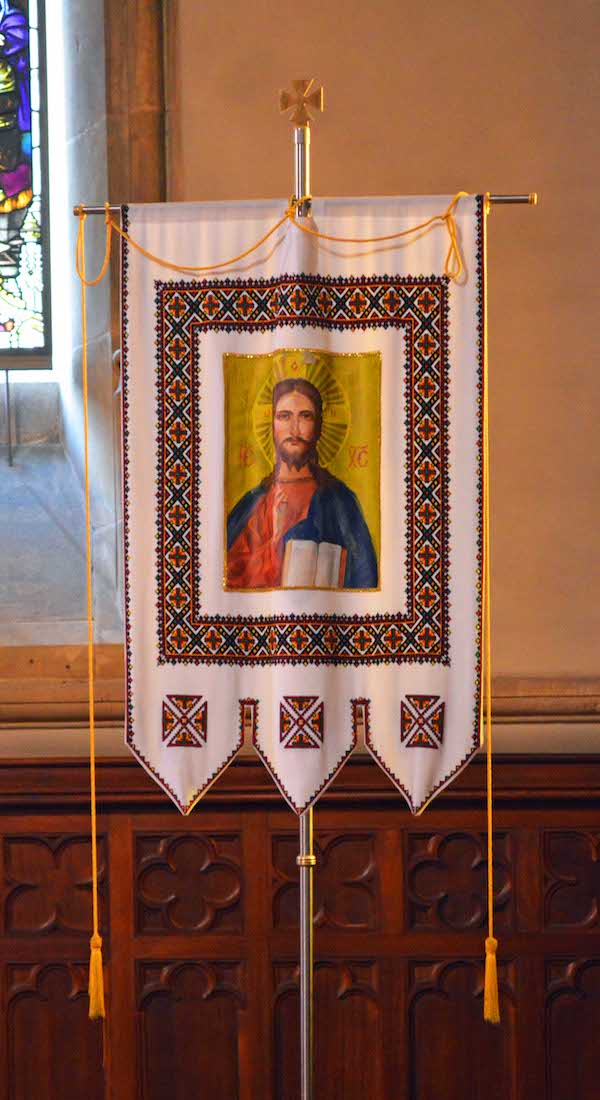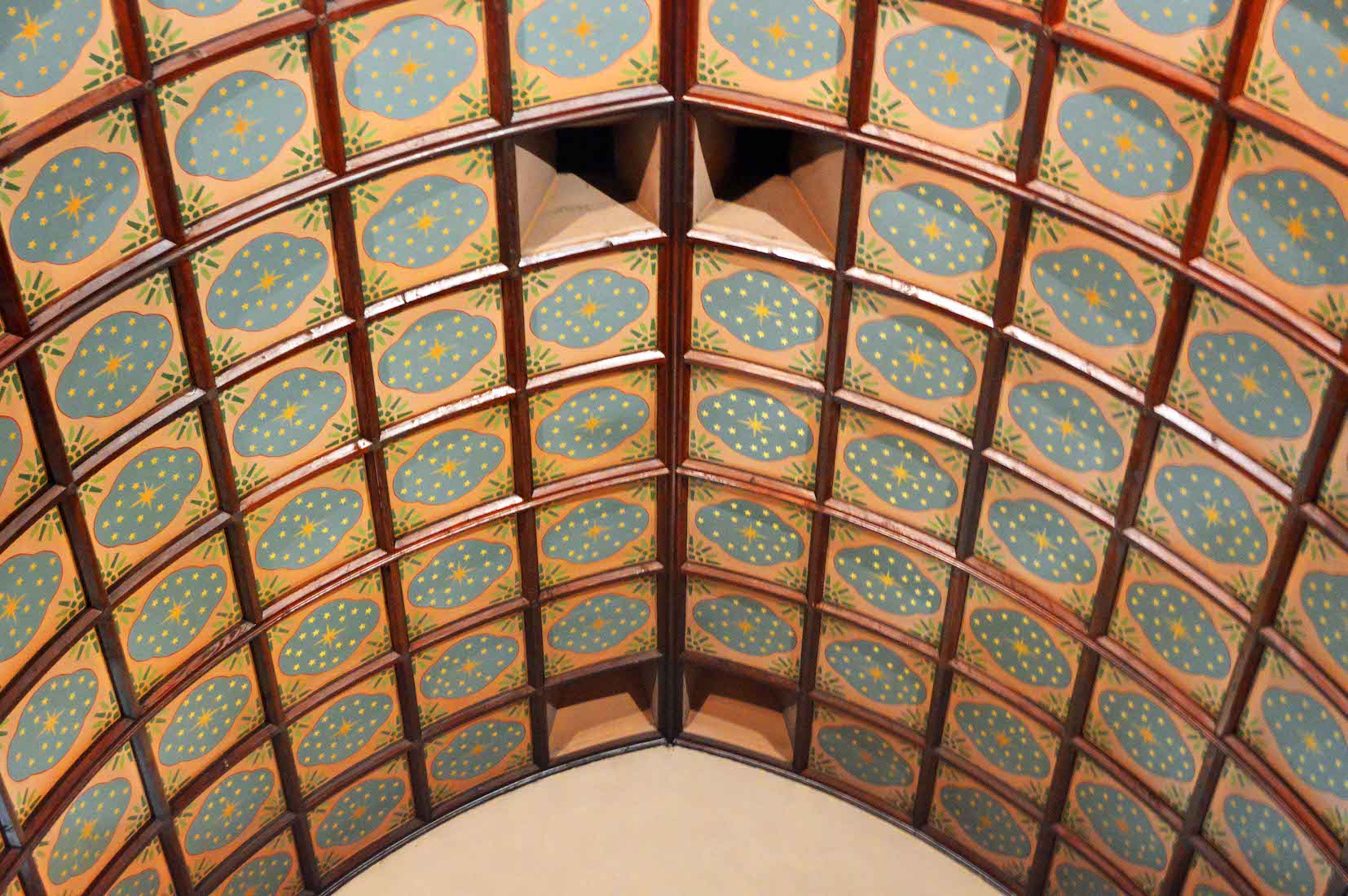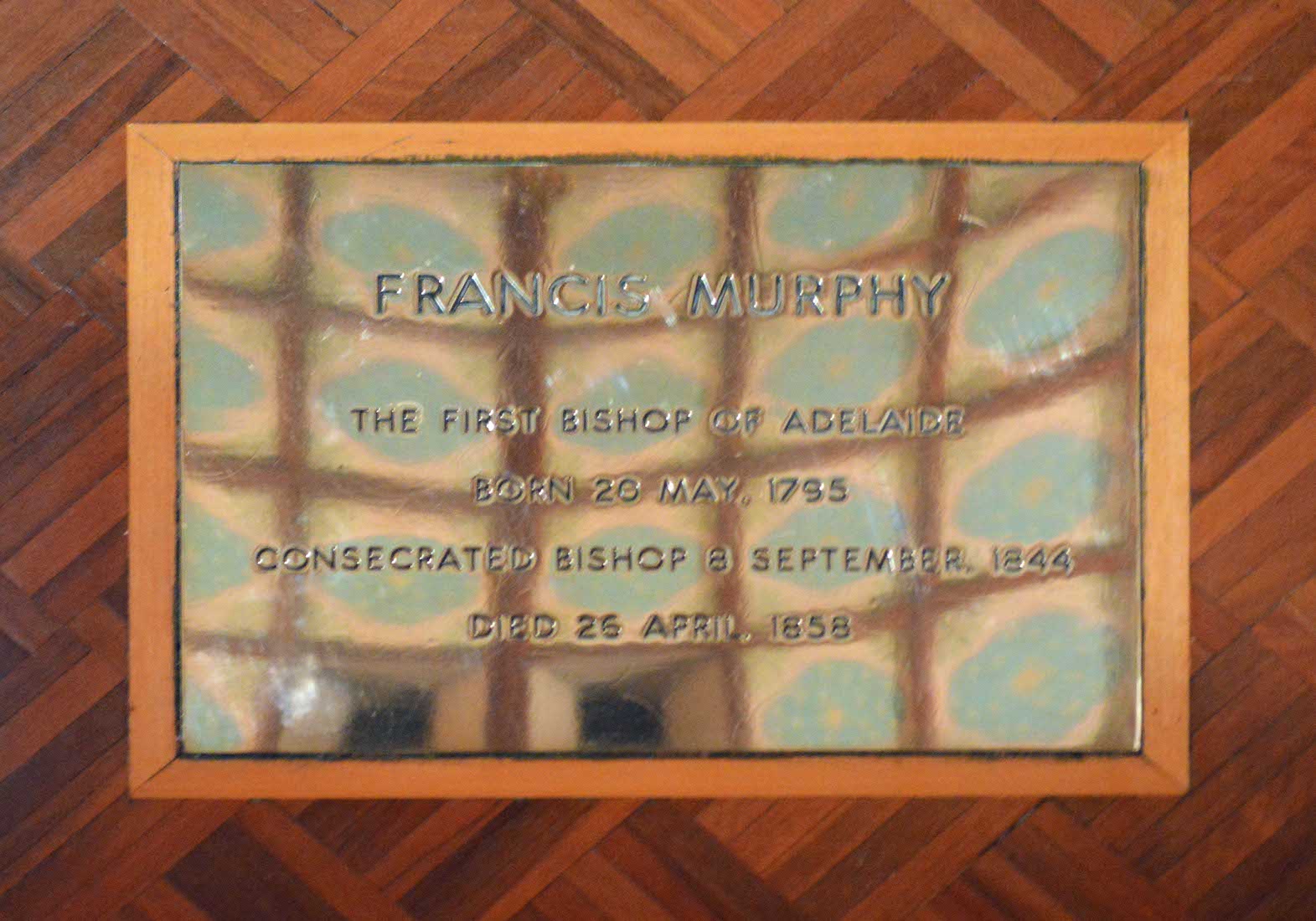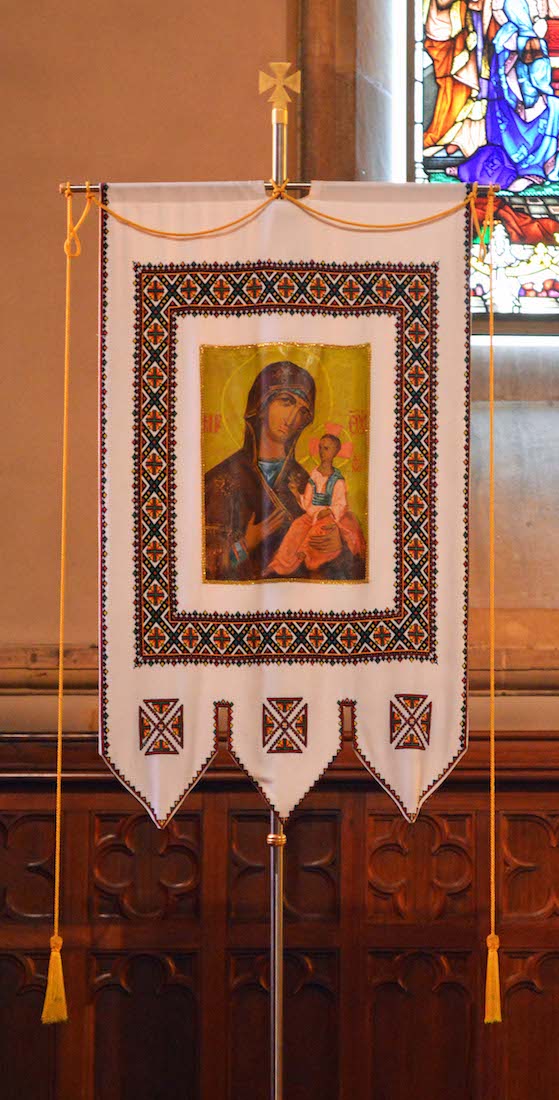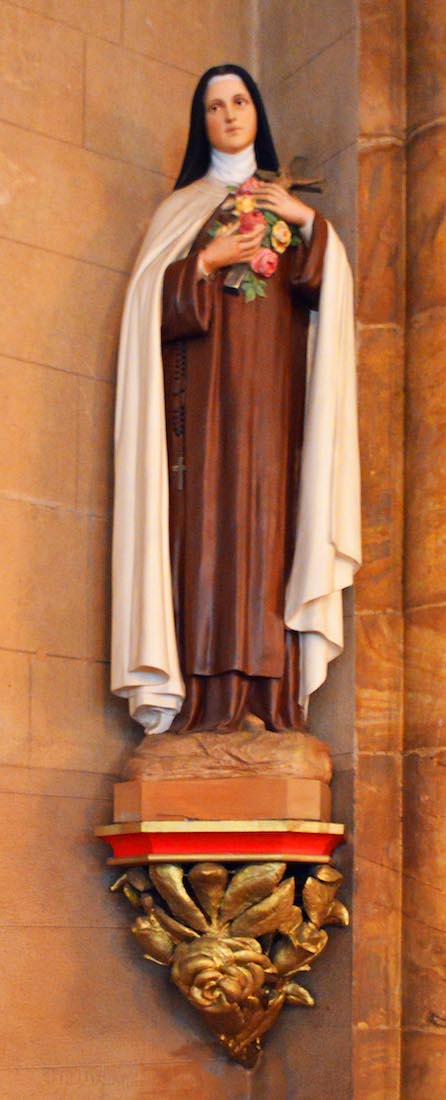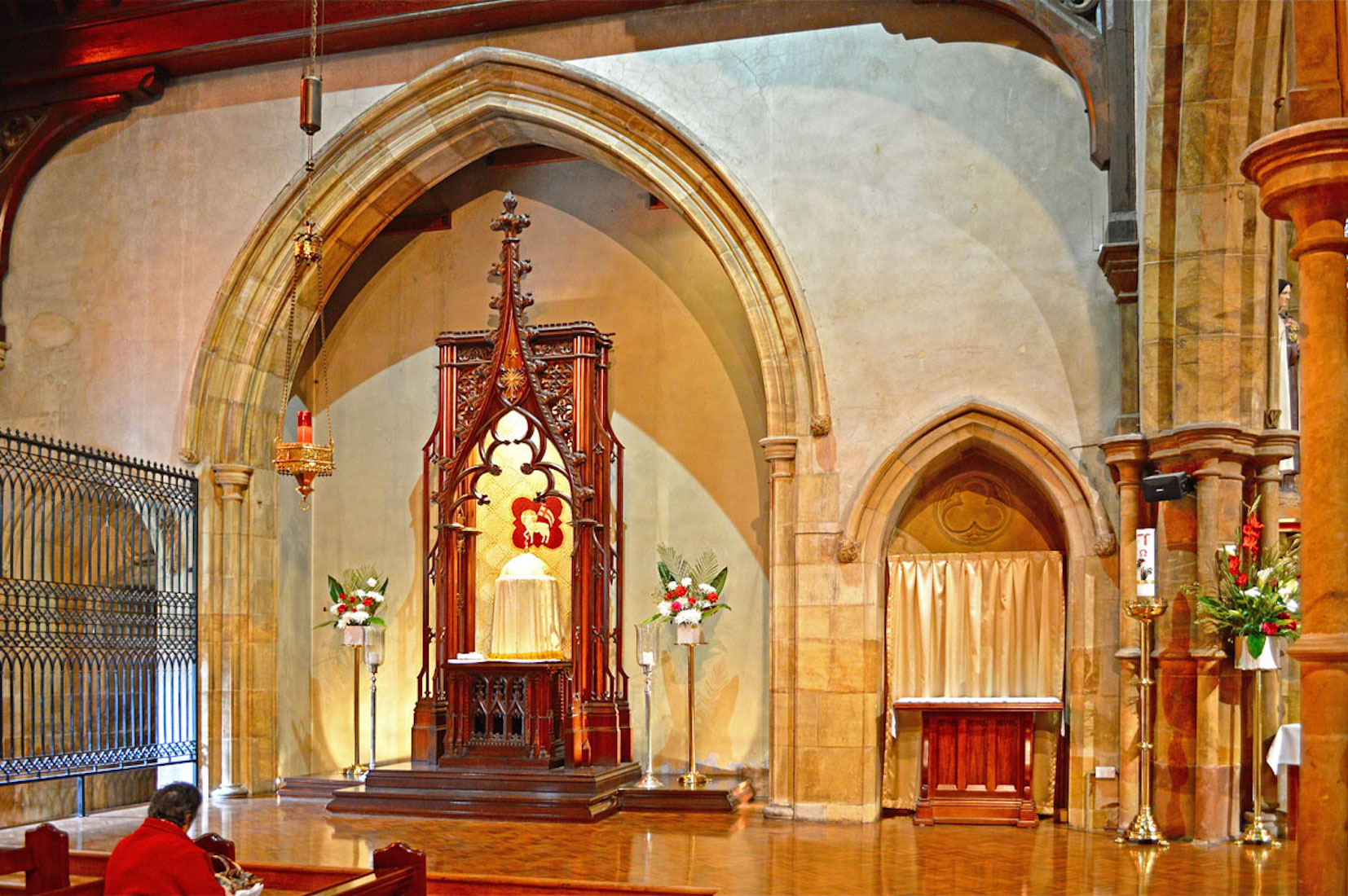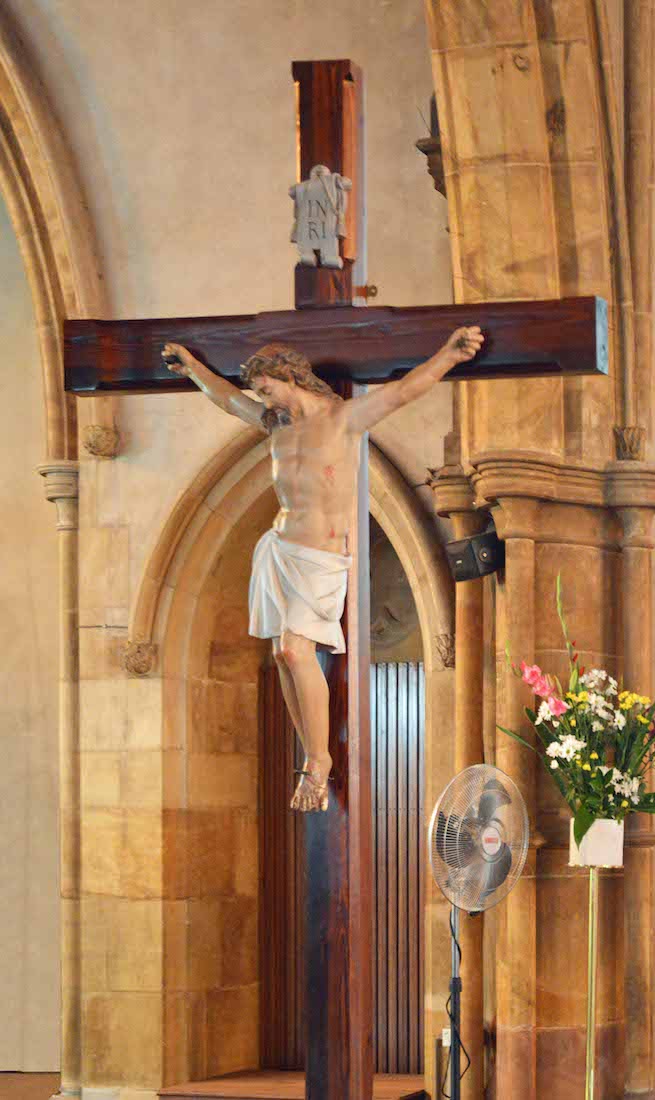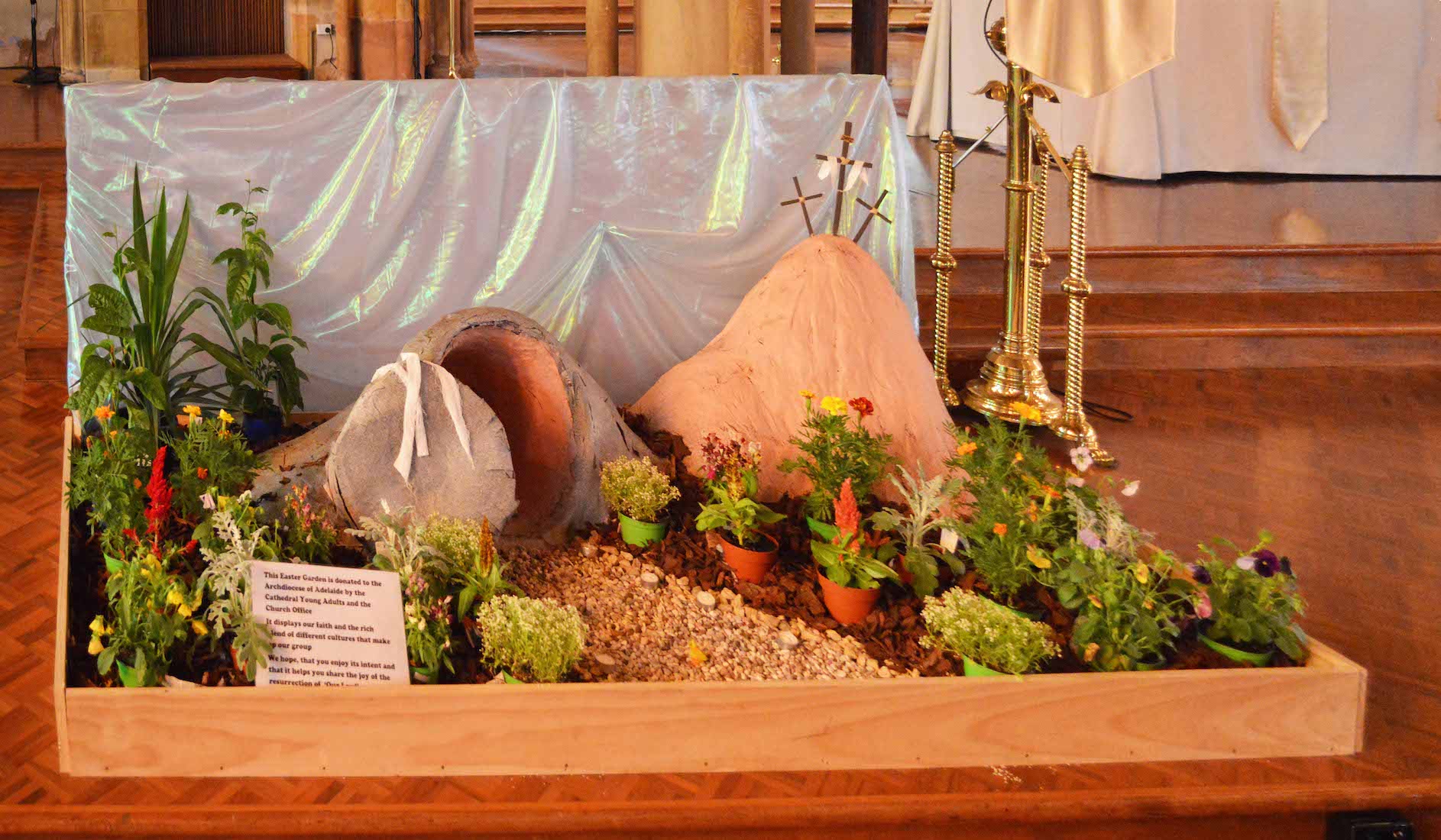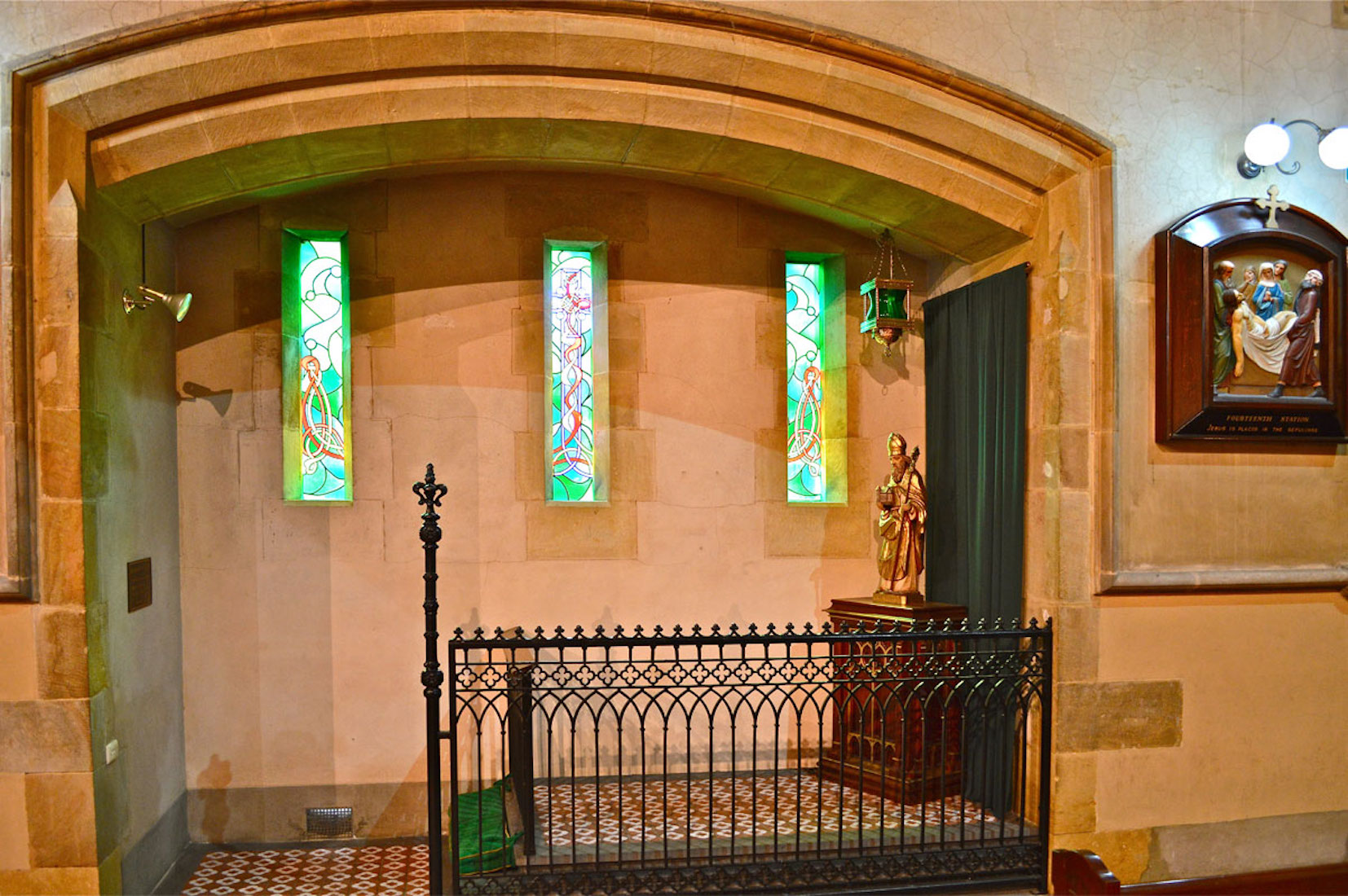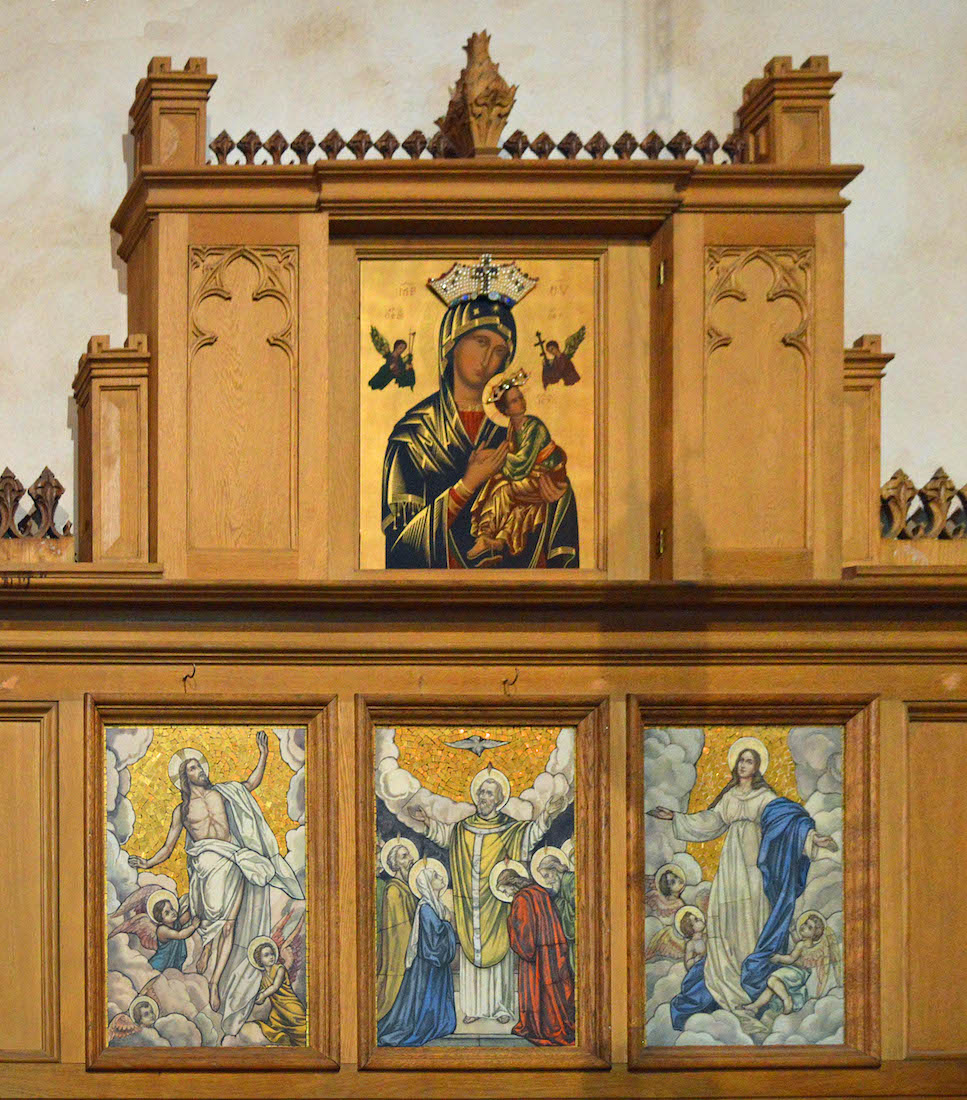
The top icon is the well known ‘Lady of Perpetual Succour’. The three icons below show from left: the Risen Christ, God the Father with the dove of the Holy Spirit, and the Virgin Mary. INTRODUCTION
42. SIDE CHAPEL
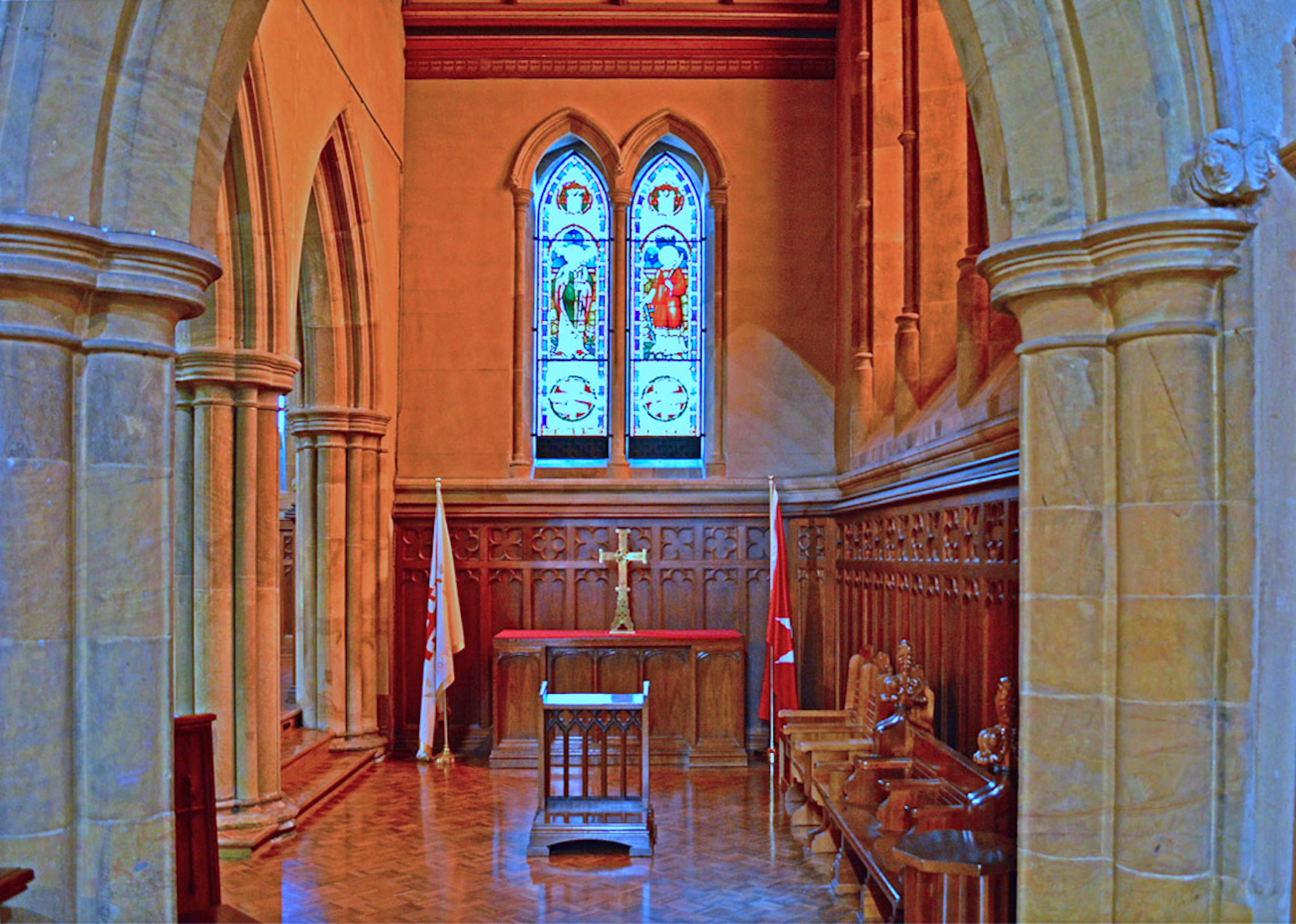
Just South of the sanctuary is a small side chapel. We notice below the windows an altar and Cross, a couple of flags, and to the right a row of sedilia (chairs).
43. CROSS AND ICON
By 2016, this icon of St Francis Xavier had appeared in the side chapel, seen here above the chapel Cross.
44. CHAPEL WINDOW
The Side Chapel has two lancet windows featuring images of St Patrick and St Lawrence, which were installed in 1892. They commemorate Bishop Geoghegan and Bishop Sheil.
45. PULPIT
The pulpit was designed by H. Jury in 1925, and was carved by Australian woodcarver W. Price in 14th Century style featuring grapes and vines which symbolize the Eucharist.
46. PULPIT INSCRIPTION
The pulpit is dedicated to those who died in World War I. The carved inscription reads: Dedicated to the memory of the Catholic soldiers of South Australia who sacrificed their lives in the Great War 1914 – 1918 R.I.P.
47. CATHEDRA
The cedar from which the cathedra, or archbishop’s chair, is carved has been attributed to the Sydney home of W. Davis. The Eucharist was reserved there when Fr. J. O’Flynn was deported by Governor Macquarie in 1818.
48. ST FRANCIS XAVIER
Within the chancel, the benevolent guiding figure of St Francis Xavier stands above the archbishop’s chair.
49. ST FRANCIS XAVIER
In 1525, Xavier went to study at the University of Paris. There, he encountered Ignatius of Loyola, who had experienced a religious conversion while recovering from a war wound. Loyola did his utmost to convince Xavier to join him on the same path of devotion. Xavier was eventually inspired by his friend's example, and in 1534 Xavier, Loyola and five others pledged themselves to the Society of Jesus (the Jesuits). In addition to vows of celibacy and poverty, they also promised to visit the Holy Land.
50. PROCESSIONAL CRUCIFIX
Each cathedral has a processional Cross or Crucifix, used in services to lead the procession of clergy.
51. EAST WINDOW
The sanctuary is dominated by the great Eastern windows. Six significant events in the lives of Jesus and Mary are depicted in these windows.
52. JESUS BANNER
A banner stands on either side of the sanctuary window. This one carries an iconic image of Christ and bears the letters IC XC which is an abbreviation from the Greek for ‘Jesus Christ’.
53. SANCTUARY CEILING
The sanctuary/chancel has an arched ceiling with a starry theme.
54. FLOOR PLAQUE
In the floor of the sanctuary area is this plaque which reads: ‘Francis Murphy, the first Bishop of Adelaide, born 20 May 1795, consecrated Bishop 8 September 1844, died 26 April 1858’.
55. MADONNA BANNER
On the left side of the sanctuary stands another matching banner, this one showing Mary and the infant Jesus. Again iconic in nature, we read the text MP OY standing for ‘Mother of God’, and again IC XC standing for ‘Jesus Christ’.
56. ST THÉRÈSE
Standing at the left side of the sanctuary is St Mary Thérèse of Lisieux. She lived 1873 – 1897, and was a Roman Catholic French Discalced Carmelite nun. She is widely venerated in modern times. She is popularly known as ‘The Little Flower of Jesus’ or simply ‘The Little Flower’.
57. BLESSED SACRAMENT CHAPEL
The focus of this chapel is the tabernacle. The red light signifies the presence of Christ in the Eucharist reserved in the tabernacle. The liturgical colours change with the feasts and the seasons. The tapestry was created by Adelaide embroiderer Mrs W. Meddens, and the pedestal and canopy by H. Jury.
58. CRUCIFIXION
During Easter this Crucifix has been erected near the front of the nave. The fact of the crucifixion is well documented. Also, scripture states that Christ died for our sins, and while this is a central focus of Christianity, it has generated much theological debate!
59. EASTER TOMB GARDEN
Another Easter display near the front of the nave is this tomb garden, showing the empty tomb with the covering stone rolled away.


